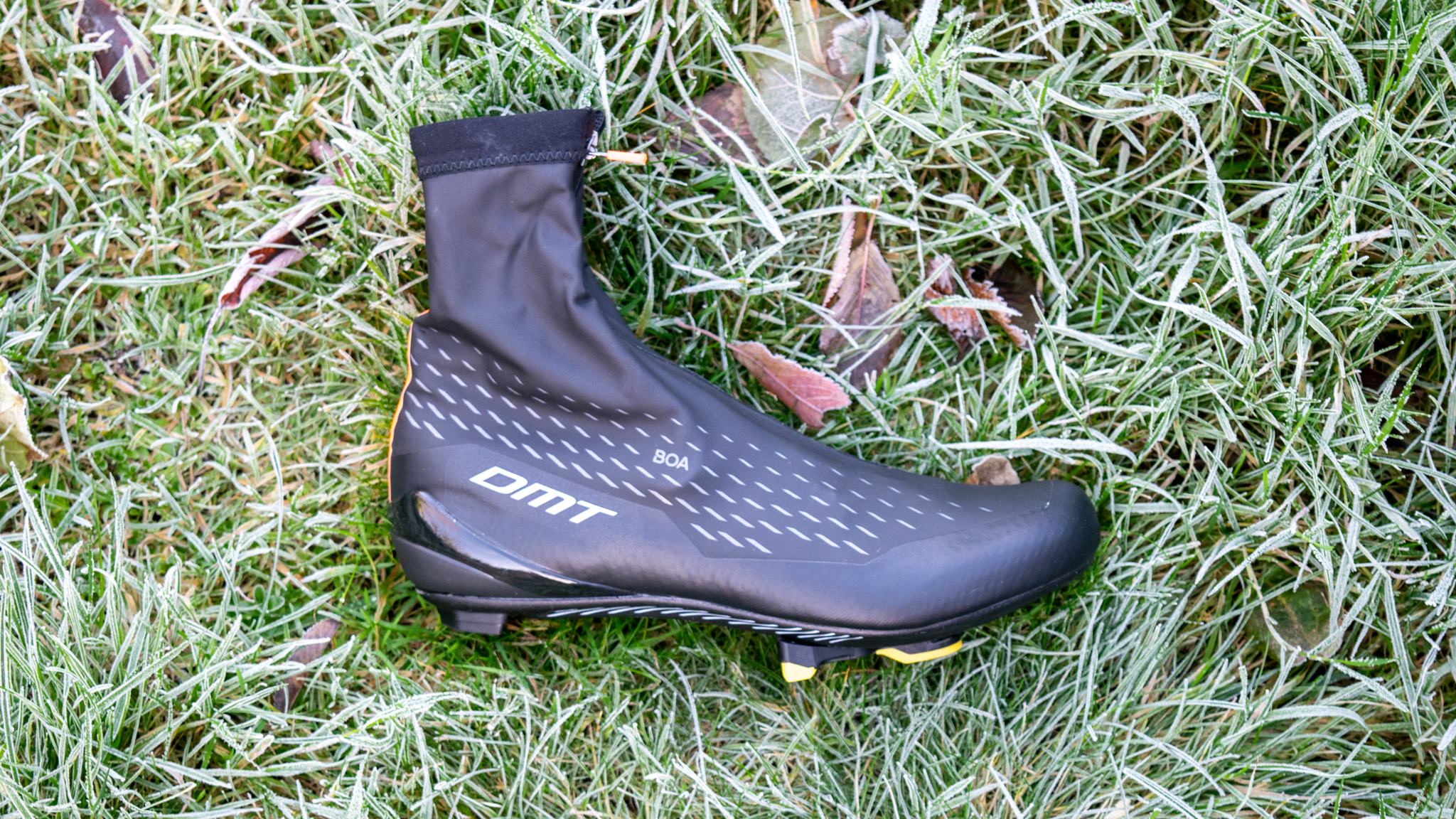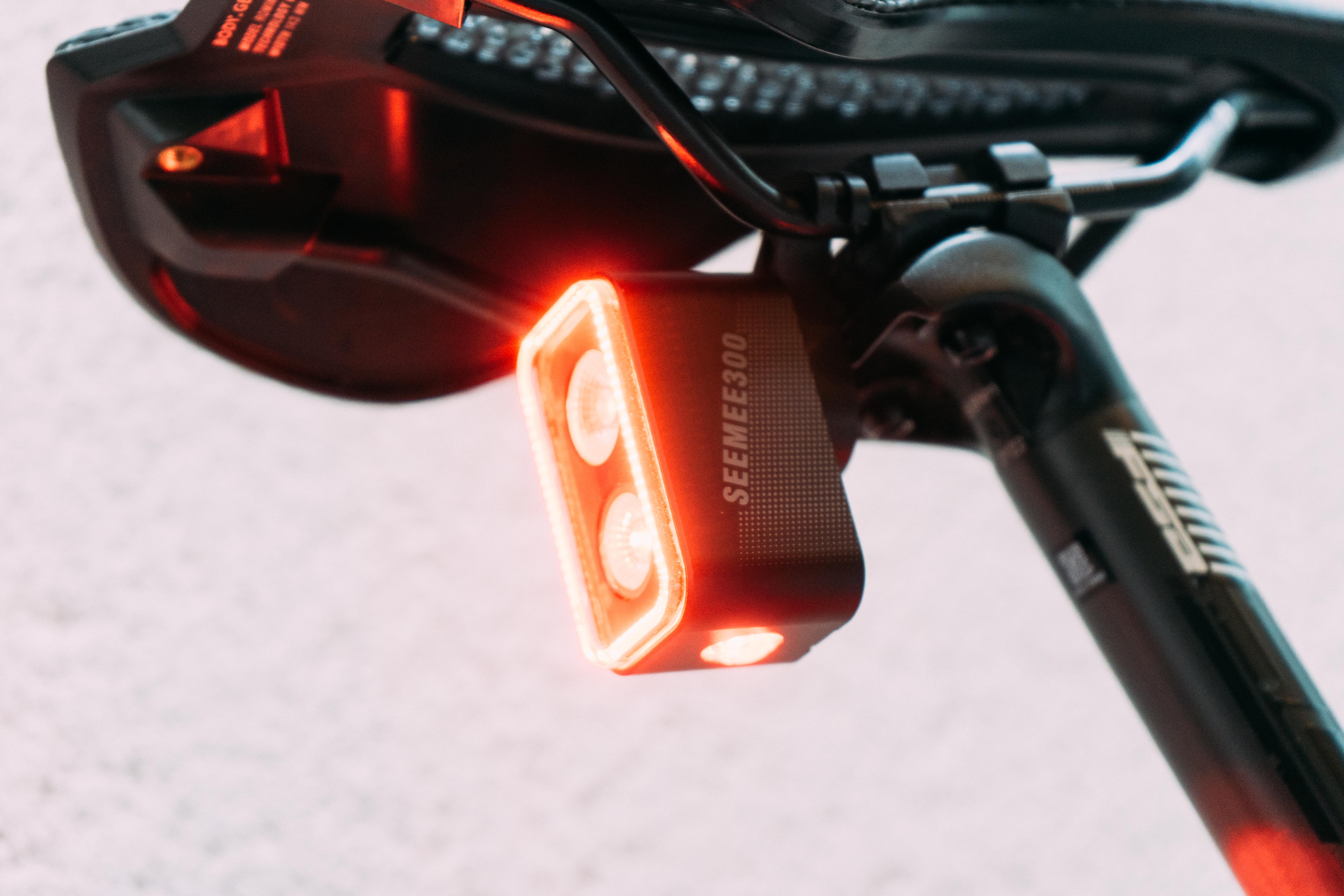Cyclingnews Verdict
The DMT WKR1 winter shoes use an innovative design that provides another winter riding option. They are sleek and stylish, but I don't think they realise their full potential.
Pros
- +
Low-bulk design that pairs well with overshoes
- +
Innovative and stylish design
- +
Provide a middle ground between boots and shoes/overshoes
Cons
- -
Odd sizing range
- -
Lack of thermal efficiency on their own
- -
Zip will let in water over time
- -
Water can work its way in from the loose ankle cuffs
You can trust Cyclingnews
Price: £269.99 / $349.99 / €249
Weight: 294 grams per shoes - Size 43
Sizes: 37-48
Colour: Black / Orange
My winter cycling shoe testing continues this week with a review of the DMT WKR1 winter cycling shoes, a shoe that excited me when I first saw it due to its lack of bulk and lightweight design.
These WKR1 shoes use a regular cycling shoe inside, similar to the KR1 model from DMT, which also uses a single BOA dial. The inner shoe is a knitted lightweight number that then has an integrated, DWR (durable water repellent) coated outer cover to provide winter protection. In short, the shoes have their own integrated overshoes.
The best winter cycling shoes can often be bulky and don't help me feel very fleet of foot when out on the road bike. If you prefer a lighter setup without extra bulk, you may well like the WKR1 shoes. Another plus point for them is that, unlike many winter boots due to their inherent bulk, you can wear a set of the best cycling overshoes over them if you wish. The shoes have a retail price of £269.99 / $349.99 / €249 and come in the single orange/black colour you see here.
I've been riding in these shoes for over a year, but the recent freezing, wet weather here in the UK has provided a great block of testing.
Design and Aesthetics
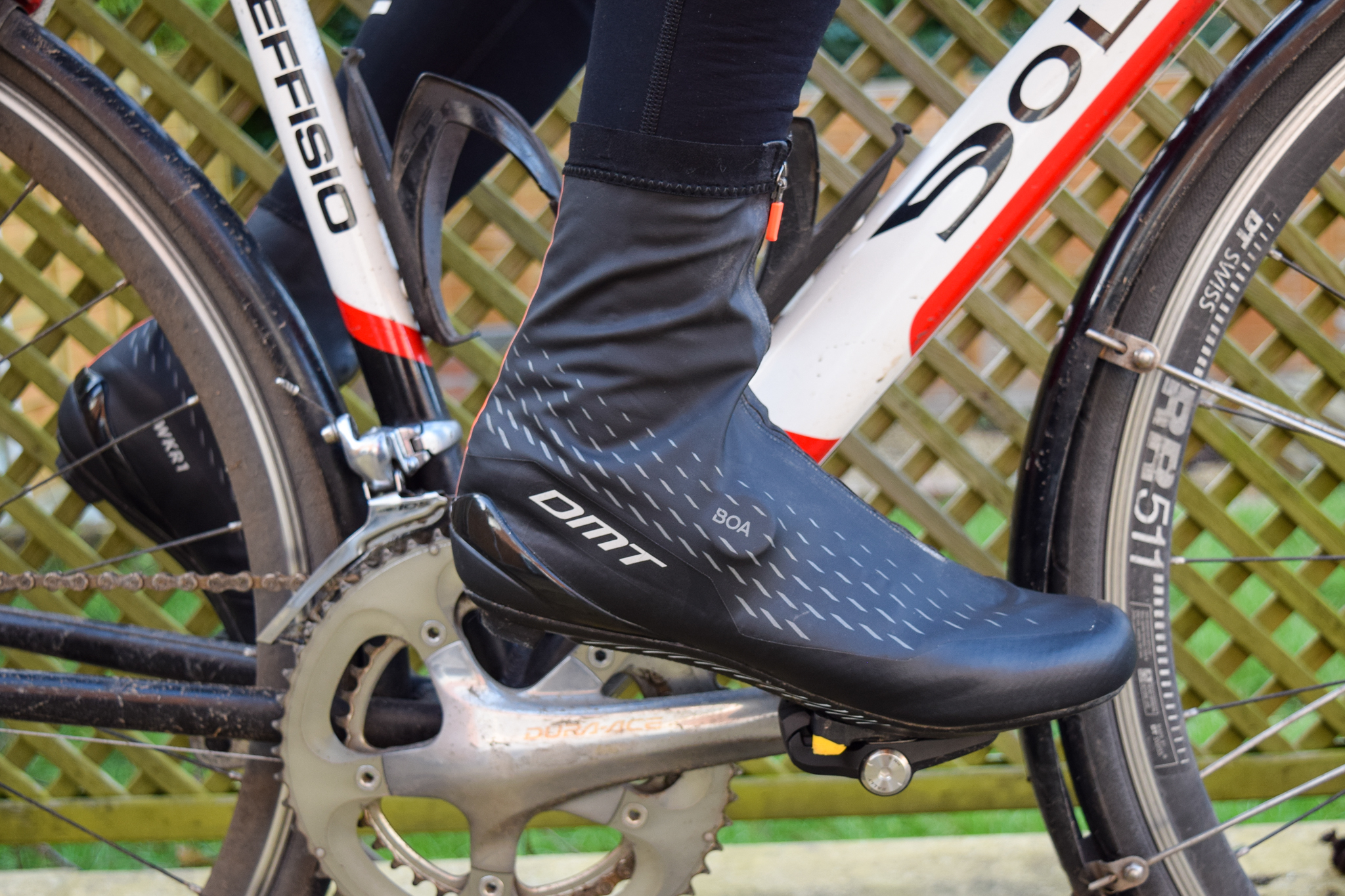
On the aesthetics front, I think the DMT WKR1 makes a refreshing change from chunkier winter boots. They provide a sleeker, tidier, and lighter package overall. The knitted shoe itself, which you can’t see in its entirety due to the integrated outer cover, is bright orange, and is something I’ve tried to keep my mucky winter hands and gloves away from when taking the shoes off post-ride.
Externally, the overshoe - DMT calls it the ‘softshell outer layer’ - is black with horizontal reflective silver flashes along its length. There are also silver 'DMT' and 'WKR1' wordmarks on the right and left ankles respectively. The zipper puller is bright orange as are the vertical lines that run from the heels up to the ankles, a nice boost in visibility as you pedal. These orange strips also seal the seams of the outer cover externally and cover the stitching neatly.
The DMT WKR1s are also lighter than your average winter boot. For example, there’s a 219-gram saving over the Sidi Nix winter boots I recently tested, which is worth noting if you want lighter kit to train in during winter.
The latest race content, interviews, features, reviews and expert buying guides, direct to your inbox!
Design-wise, the shoes use a composite nylon outsole, but for the price and racier design of the shoe, you might expect a carbon fibre sole. The cleat mounting is for a three-bolt drilling, so if you run four-bolt cleats, you will need an adaptor.
The last of the shoe is not particularly straight or wide, something that is generally regarded as being more comfortable. There’s a clear curve and the midfoot is pretty narrow, as is the pointed toebox. I measure the sole at its widest point at around 91mm for instance, which is a touch narrower than my foot. It's a tricky one, but a roomier shoe should provide a bit more warmth on cold winter rides.
The shoe upper itself is knitted with an integrated tongue and ankle cuff that has a small pull tab at the rear to help you pull the shoe on, while a single Li2 Boa dial takes care of retention. There's also a grippy patch on the heel cup to aid retention and prevent heel lift.
The outer overshoe layer is bonded to the shoe neatly and covers the whole of the front of the foot, meaning you can’t access this part of the shoe. It's bonded around the bottom of the shoe and the rest sits loose, just like an overshoe would. Once your foot is into the shoe, it’s just a case of doing the Boa up, pulling the outer layer up and around the shoe and doing the water-resistant zipper up.
I don’t know of another winter road cycling shoe with this design, and on paper it got me pretty excited. The only other model I know that's similar is the SPD (MTB & gravel pedals) Giro Blaze, which might be worth looking at if you like this design. The DMT WKR1 is also available in an MTB version as well.
A lightweight, performance-orientated winter shoe with an integrated overshoe seemed like a bit of a win. I think it’s a great concept and could help eliminate some of the drawbacks of winter cycling boots or even eliminate the need for certain overshoes, but I think it needs further refinement to be a really game-changing bit of winter kit.

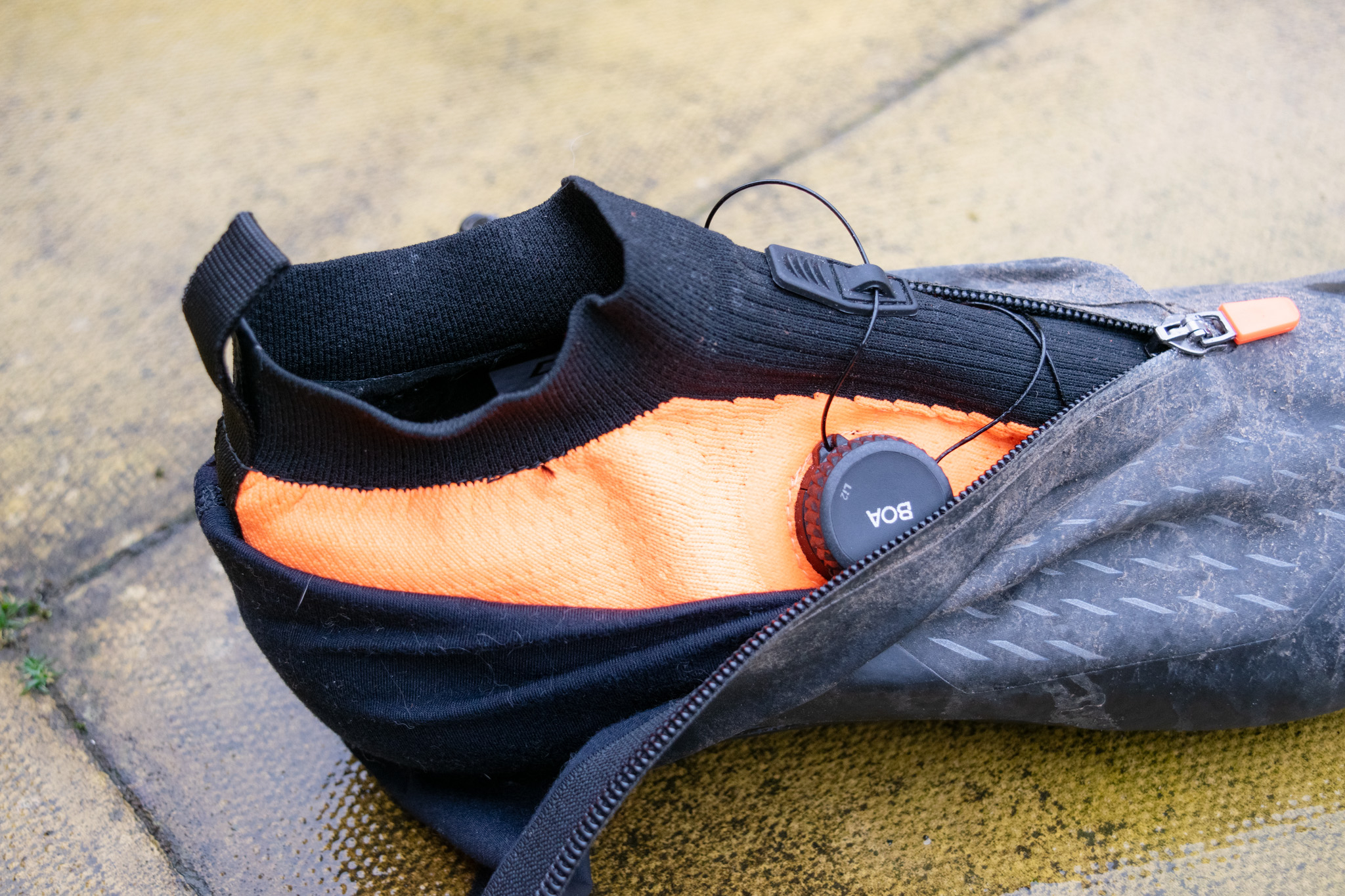
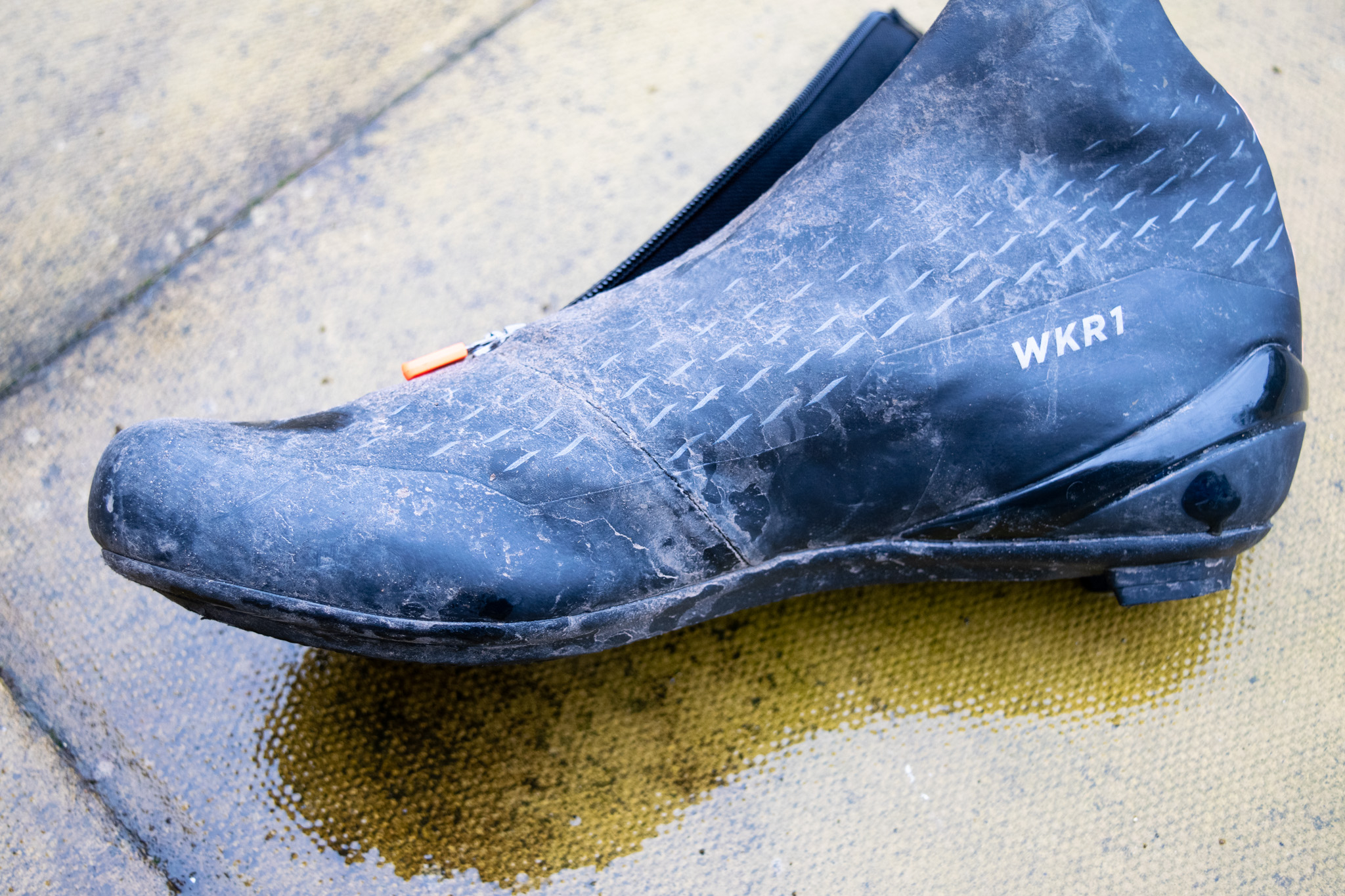
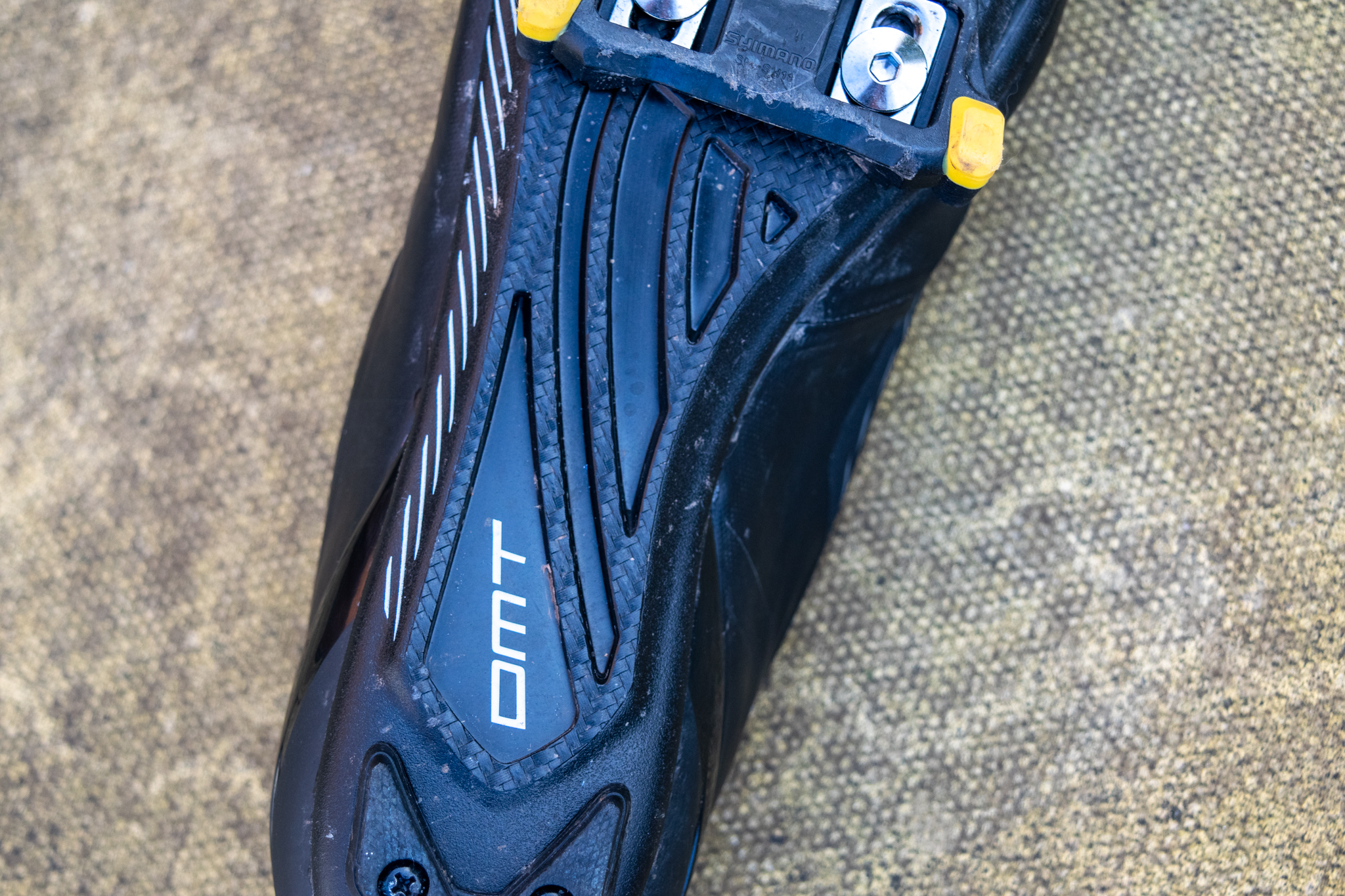
Performance
I’ll start with the fit of the shoes, which I have found to be a little different to other prominent brands.
The shoes have not been hugely comfortable for me and I haven’t felt they have provided a huge amount of support for my feet. Some of this feeling may come from the knitted uppers which don't provide as much structure as some shoes. I found the Sidi Nix winter shoe to be far more comfortable for example, and it's a shoe with a more sturdy upper. It's a new feeling for me which could be part of things, but it's certainly not causing DMT athlete Tadej Pogacar any issues. They haven’t caused me any pain, but they haven’t made me relish riding in them. I will caveat this by saying it's a little difficult for me to achieve a perfect fit, as I fall somewhat in between sizes.
I will state the obvious and add that our feet are all different. If you love what you see, it’s of course going to be a wise move to check sizing, which I would recommend here. I may fall foul of DMT sizing for these shoes. It offers a 43 and 44, which in the UK equivalent sizes is listed as 8 ¾ and 9 ¾. The next size up again is a 45 is a UK 10.5, which doesn’t help me out too much. You may even want to order a couple of pairs and send back the one you don’t want or get some advice at a local retailer ideally. DMT has a size guide table, fit discover tool and virtual try-on tool, which whilst being very helpful, tells me I’m not the first to question fit.
These are winter-focused shoes, so how’s thermal efficiency? Not great at lower temperatures. I’ve done a lot of riding at below 5ºC / 41ºF and just above freezing and have ended up with pretty cold toes. However, an advantage is that they will pair very nicely with a pair of winter overshoes, which is something chunky boots don’t do well. If you feel the cold or are riding easily, I would recommend going with overshoes over the top or you will have cold feet.
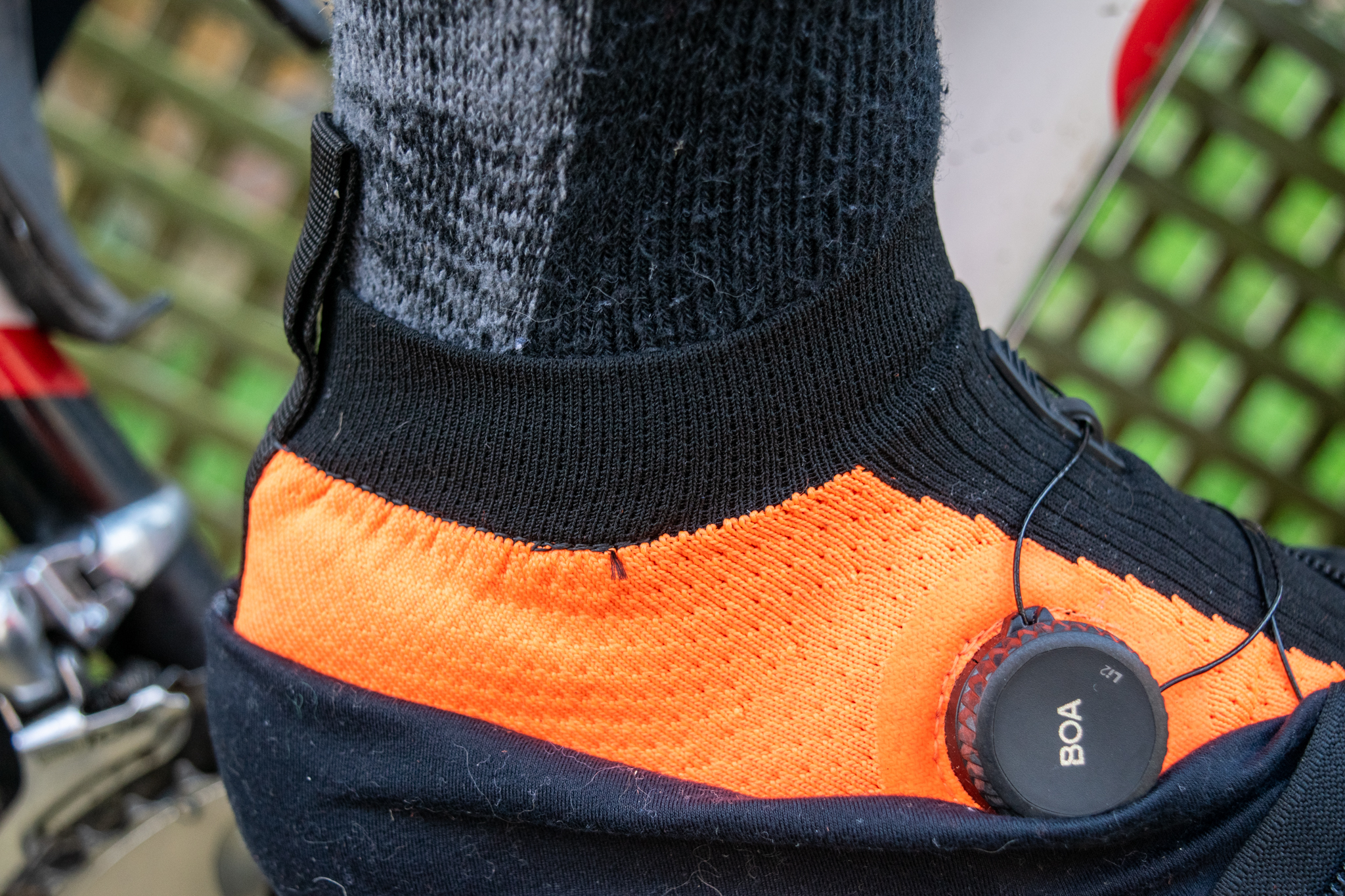
The DMT WKR1 stands up to water well and will definitely look after you when dealing with road spray and rain. If you run a front mudguard especially then you've no need to worry, as the added protection from the fender and the shoe's DWR coating will have you covered.
They will get mucky on dirty winter roads, but the good news is they will clean very easily. I cleaned a fortnight's worth of grime off with a brief hose, and a wipe with a kitchen wet wipe and kitchen towel; all very easy, all told.
Where they will fall for me is if water penetrates from soaking wet bibtights and makes its way down into the shoes, often the achilles heel of winter boots and shoes. If only the cuff of the overshoes was taller and tighter, this could be minimised. What you can do put your bib tights or leg warmers over them, which looks cleaner and should help minimise water ingress, especially if the tights or warmers have a good DWR coating themselves.
The overshoe zip is listed as being 'water resistant' and I have found this to be true. It will stand up to a decent amount of water, but finally succumbed to my test using my hose on various settings. It took quite a few minutes and a lot of water but the zipper was eventually breached and the knitted shoe instantly started soaking up water. In the real world I think it would take a good amount of heavy rain and a prolonged soaking in front for the zip to succumb, but once it did you would quickly have wet and cold feet, compared to the wet and warm insulation of a neoprene overshoe.
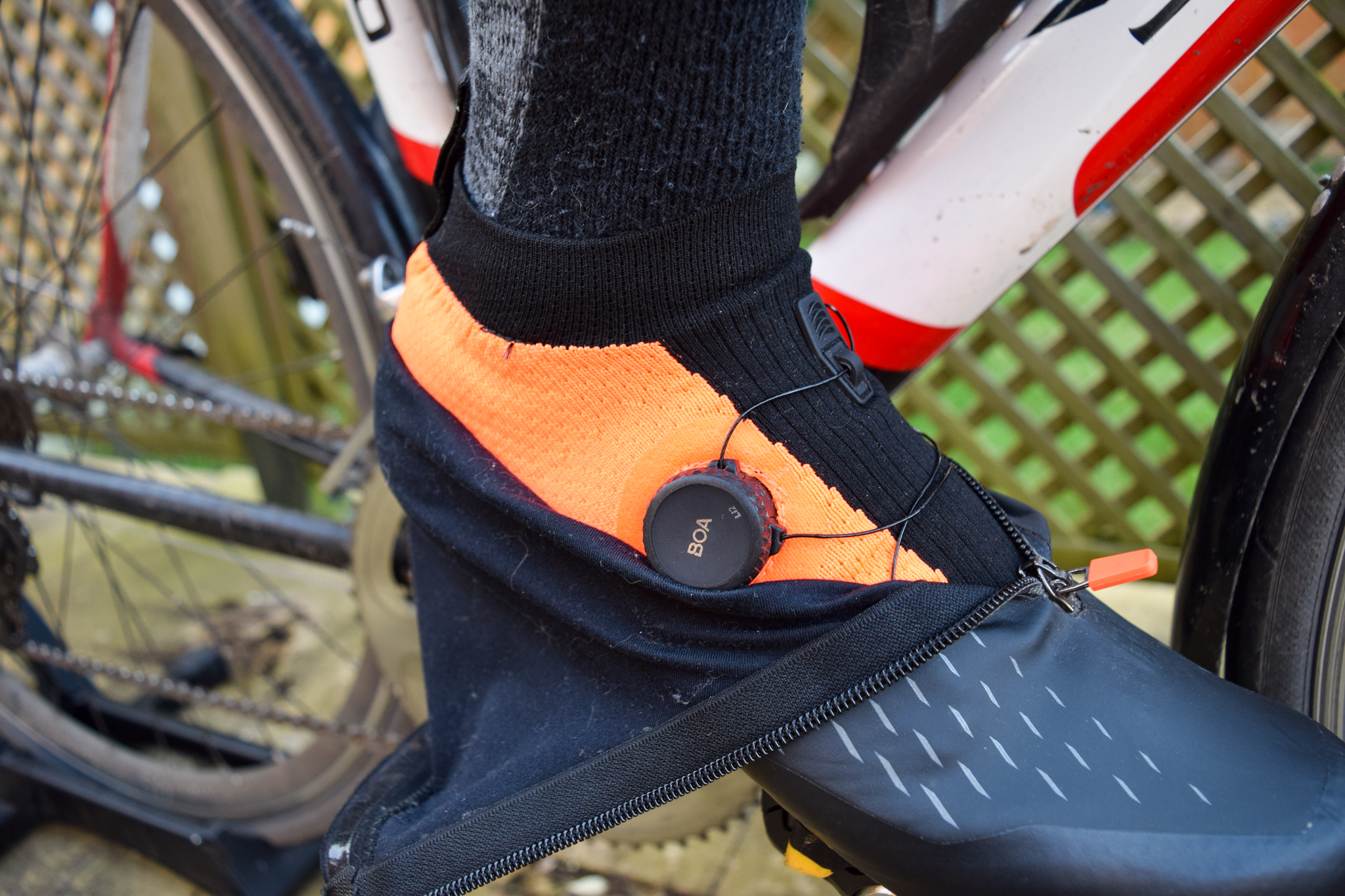
Value
Unless you can find a deal, I don’t think the DMT WKR1 provides tremendous value.
Used on their own, I had cold toes under about 5 degrees, especially when riding easily. A two-hour ride at a little above freezing resulted in the coldest feet I’ve had in years. However, if you're riding with intent and want something light and sleek they may well work for you, but you'll have to decide whether they are more attractive than a shoe/overshoe.
They deal with water well but aren't waterproof. The ankle collar is the major weak point, the zipper less so. If your feet do get wet, they are going to end up cold too.
They will pair nicely with a good pair of overshoes, but this does bump your outlay up again.
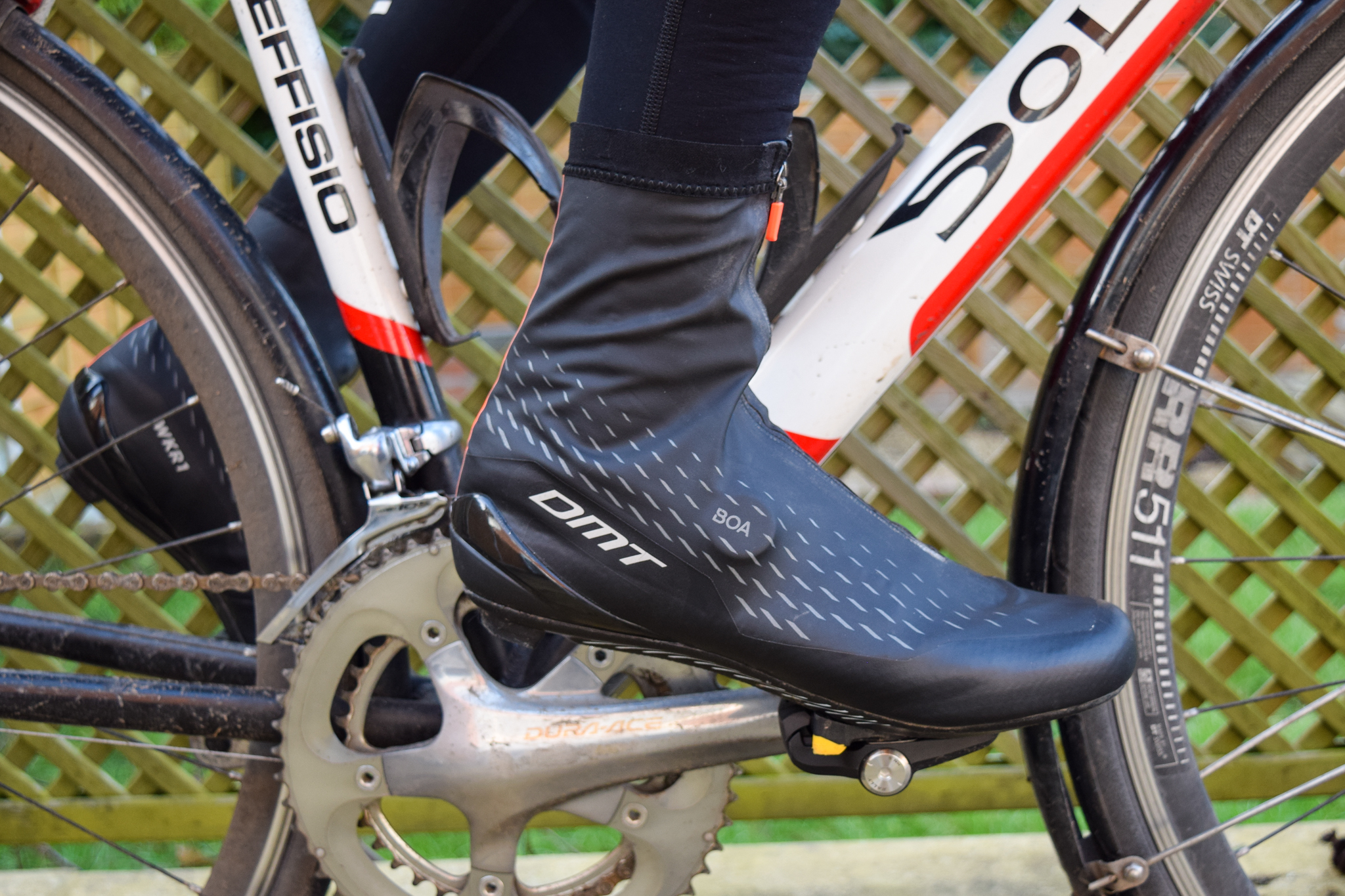


Verdict
These shoes perform best when used for more intense riding when you want protection from water and spray. I'd also make sure to tuck my bib tights over them for protection and aesthetics. For very cold or wet riding, I think there are shoes and overshoe options that will provide you with more protection, and warmth.
It's useful in a market range sense to have another winter cycling shoe option that isn't a full-blown boot, but what interests me the most is the potential these shoes have rather than how they are right now. A revised, taller and tighter ankle collar to keep the rain out, a little more warmth and a less pointed-toe box could help these shoes become an overshoe killer for a good range of riding.
| Design and aesthetics | An innovative design that is light and sleek, and suited to more intense riding, falls shorts on it's own regarding warmth and to an extent waterproofness at the ankle | 7/10 |
| Comfort | I haven't found my test pair especially comfortably, but I fall foul of sizing gaps to an extent, the knitted design is soft and comfy though | 7/10 |
| Warmth | Not very warm on their own in low termperatures | 6/10 |
| Waterproofness | Good overall, the ankle is the major weak point | 7/10 |
| Value | Unless they really speak to you, you can achieve more waterproofing and warmth with cheaper options | 7/10 |
| Overall | Row 5 - Cell 1 | 34/50 |

Tom joined the Cyclingnews team in late 2022 as a tech writer. Despite having a degree in English Literature he has spent his entire working life in the cycling industry in one form or another. He has over 10 years of experience as a qualified mechanic, with the last five years before joining Cyclingnews being spent running an independent workshop. This means he is just as happy tinkering away in the garage as he is out on the road bike, and he isn’t afraid to pull a bike apart or get hands-on with it when testing to really see what it’s made of.
He has ridden and raced bikes from an early age up to a national level on the road and track, and has ridden and competed in most disciplines. He has a keen eye for pro-team tech and enjoys spotting new or interesting components in the wild. During his time at Cyclingnews, Tom has already interviewed some of the sport's biggest names including Mathieu van der Poel, Tadej Pogačar and Alberto Contador. He's also covered various launches from brands such as Pinarello, Ridley, Specialized and more, tackled the Roubaix Challenge sportive aboard his own rim-brake Cannondale SuperSix Evo, tested over 20 aero helmets in the wind tunnel, and has created helpful in-depth buying advice relating to countless categories from torque wrenches to winter clothing.
